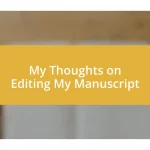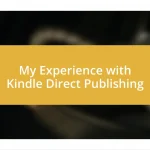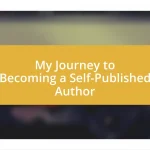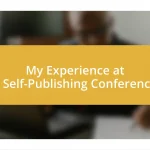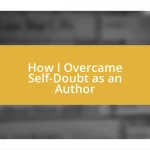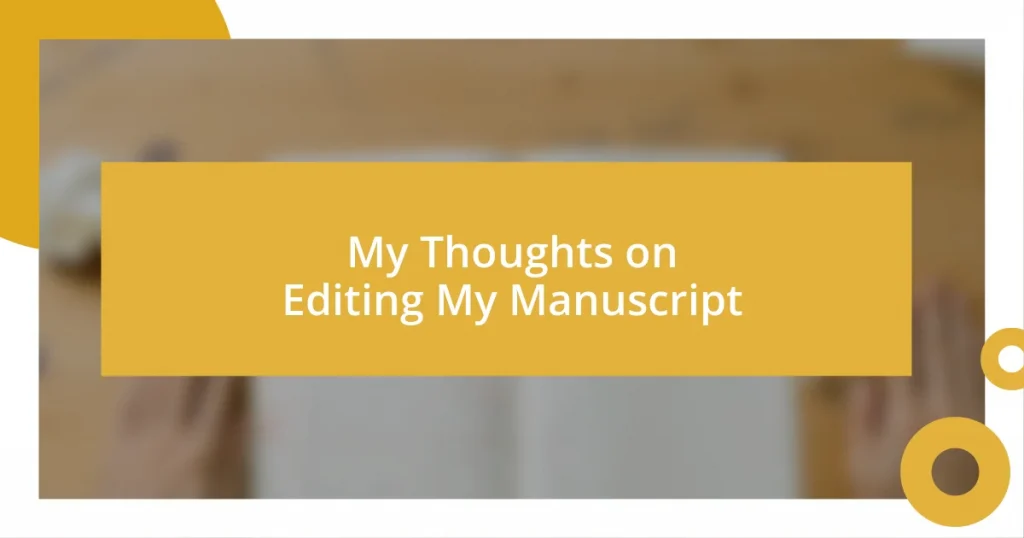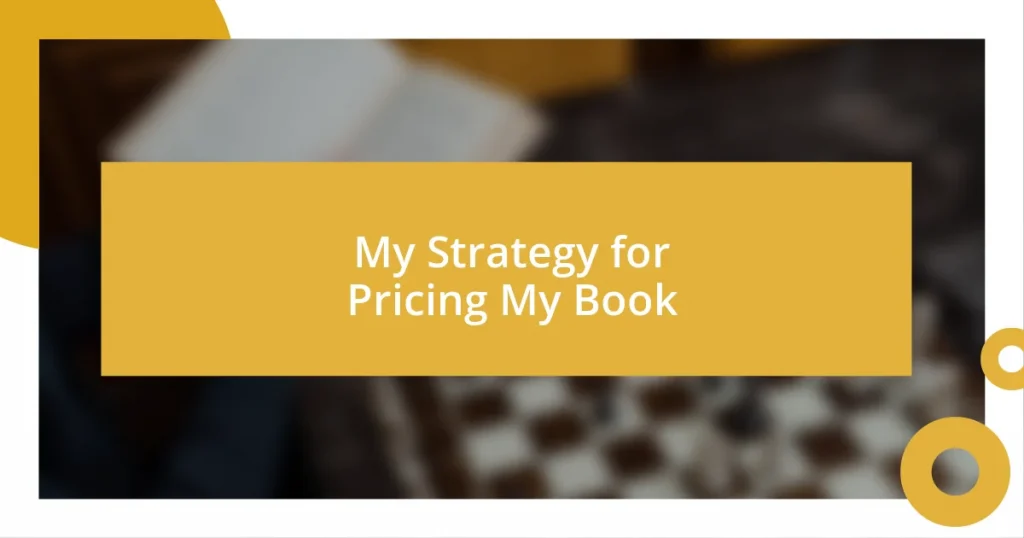Key takeaways:
- Focus on the big picture and emotional connection during the editing process to refine your manuscript effectively.
- Create a structured editing checklist that prioritizes key elements, ensuring a thorough and organized revision approach.
- Seek feedback from peers and beta readers to gain fresh insights, and thoroughly check submission guidelines before finalizing and submitting your manuscript.
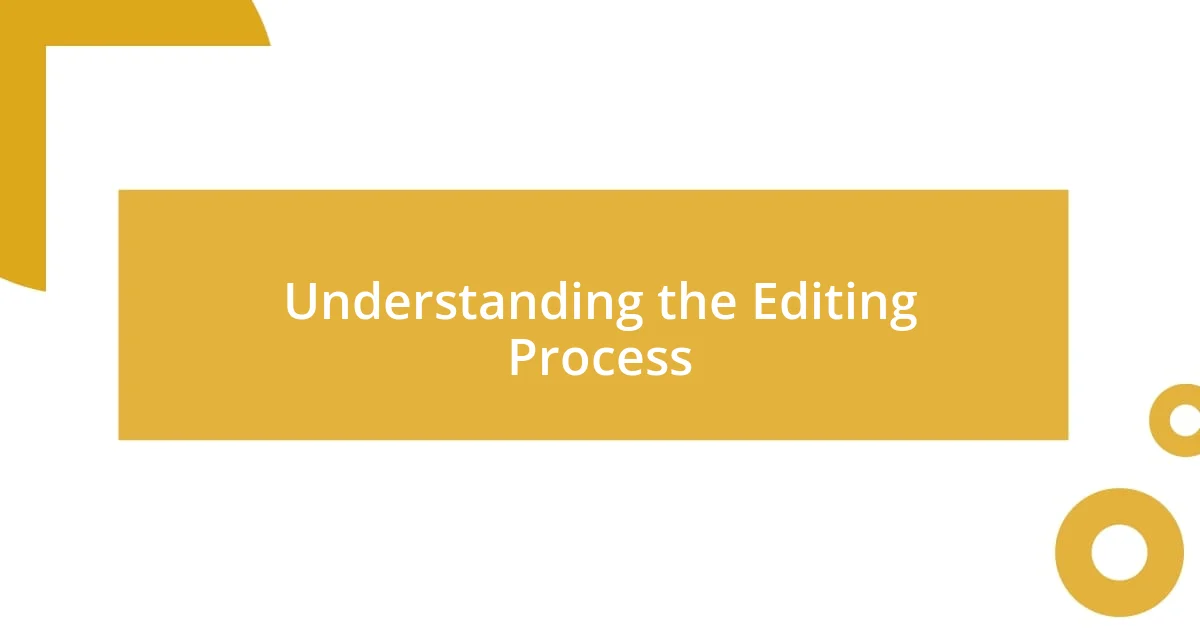
Understanding the Editing Process
The editing process can feel overwhelming, but it’s really about refining your voice. I remember the first time I edited a manuscript—I was terrified of cutting my beloved prose. But I’ve learned that every edit strengthens the core of my message, making it resonate more with readers.
When diving into your manuscript, consider the big picture first before zeroing in on the details. I often ask myself, “What’s the story really about?” This question has become my compass, guiding me through the maze of revisions. By focusing on the overarching themes and emotional beats, I can pinpoint where my draft falters and where it shines.
As I navigate the layers of editing, I find emotional connection crucial. Listening to my gut often reveals areas that need more depth or clarity. Have you ever reread a section and felt it just didn’t capture the essence of your idea? Trusting those instincts can lead to transformative revisions that elevate the entire manuscript.
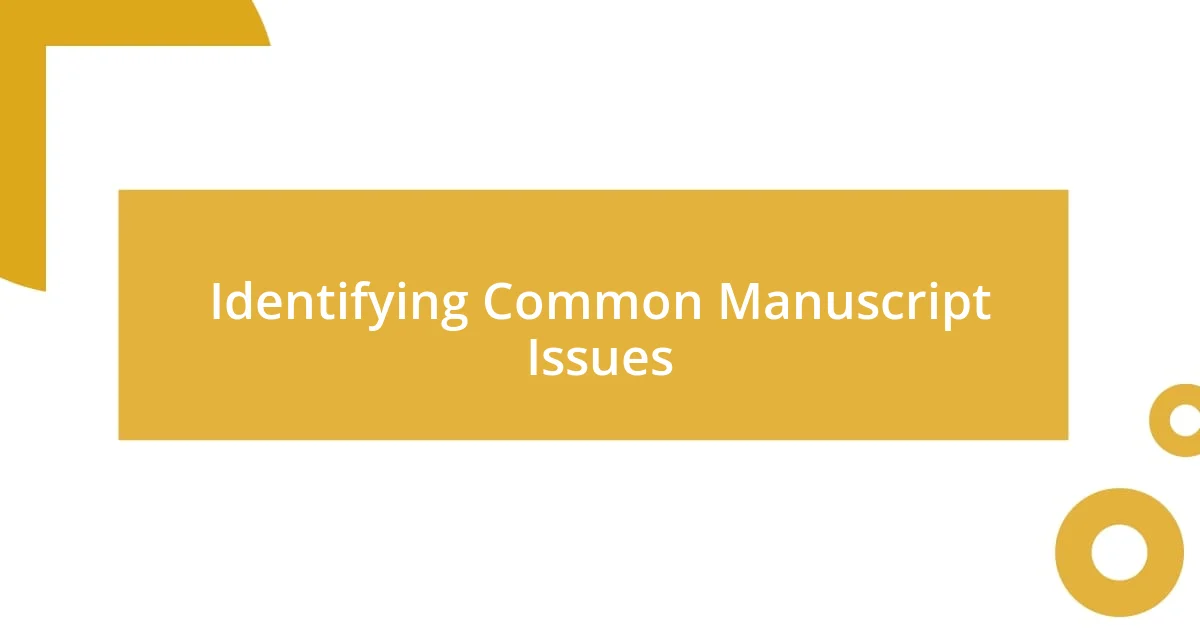
Identifying Common Manuscript Issues
Identifying common issues in your manuscript is an essential part of the editing process. I recall a time when I was deep into a draft, only to discover that my characters felt flat. It was a jarring moment, revealing that I had focused so much on the plot that I neglected the emotional arcs. This experience taught me to consistently evaluate character development alongside story progression.
Here’s a quick checklist to guide you in spotting these issues:
– Plot holes: Look for gaps in the narrative that disrupt the flow.
– Character inconsistency: Ensure your characters’ actions align with their established traits.
– Pacing problems: Identify sections that drag or rush through important moments.
– Dialogue quirks: Be on the lookout for unnatural dialogue that doesn’t fit the characters.
– Excessive exposition: Check for information dumps that overwhelm the reader.
Being aware of these common pitfalls can transform your manuscript from a rough draft into a polished piece that truly resonates with your audience. Each edit holds the potential to clarify your vision and connect with readers on a deeper level.
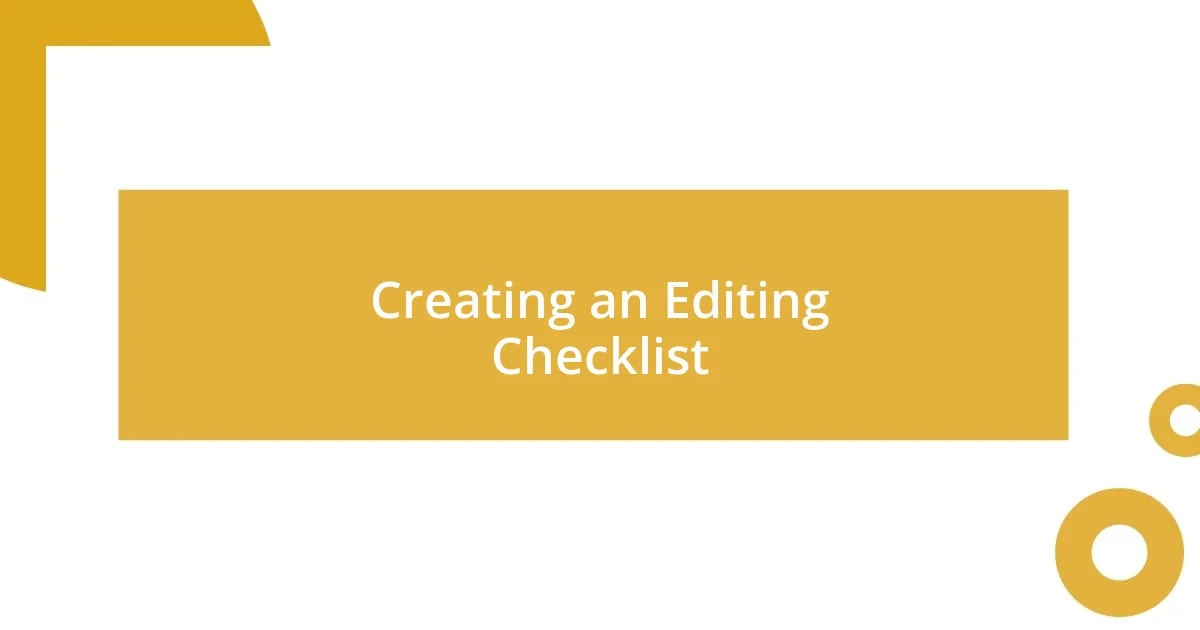
Creating an Editing Checklist
Creating an editing checklist has been a game changer for my process. When I first drafted my manuscript, I would dive into edits haphazardly, often feeling lost by the time I was halfway through. That’s when I decided to form a structured checklist to keep myself grounded. It not only organizes my thoughts but also ensures that I don’t overlook key elements.
As I refine my checklist, I can’t help but include emotional checkpoints. For instance, I always ask myself if a scene truly moves me or if it feels flat. This reflection has saved me more than once from keeping sections that simply didn’t resonate as deeply as I thought they did. Think of each point on the list as a little guide that leads you back to the heart of your story.
I also like to prioritize elements of my checklist based on the stage of editing I’m in. Early rounds focus more on broader issues, while later edits get into grammar and style, making it feel like a comprehensive, layered process. This approach helps me keep perspective and ensures that by the time I reach the final round, my manuscript is polished and true to my vision.
| Edit Aspect | Checklist Item |
|---|---|
| Theme Reflection | Does each chapter reflect the overarching theme? |
| Character Depth | Are my characters multidimensional and relatable? |
| Plot Cohesion | Are there any plot holes or inconsistencies? |
| Pacing | Does the story flow smoothly without dragging or rushing? |
| Clarity of Ideas | Is my message clear and impactful? |
| Dialogue | Does the dialogue sound natural and fit the characters? |
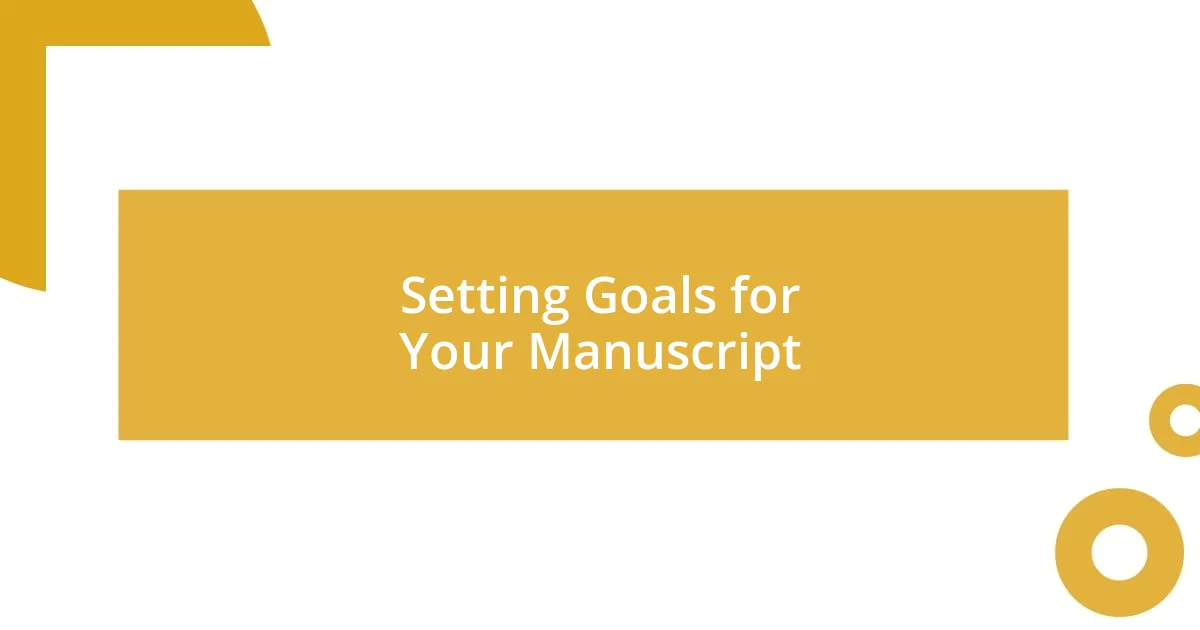
Setting Goals for Your Manuscript
Setting goals for your manuscript is a crucial step in the editing process. I remember sitting down to draft my first manuscript and feeling overwhelmed with possibilities. Establishing clear objectives helped me focus; instead of just wanting to finish my story, I asked myself, “What messages do I want to convey?” This clarity allowed me to steer my writing in a direction that truly resonated with my intentions.
As I reflect on my editing journey, I’ve found that breaking down those broader goals into smaller, actionable steps provides direction. For example, I might set a goal to deepen a character’s backstory in one edit. By targeting a specific aspect, the editing process feels less daunting and more manageable. Have you ever felt like your goals were too vague? Narrowing them down has definitely given my manuscript a clearer voice and purpose.
Lastly, I’ve learned that it’s essential to revisit and adjust my goals as I progress through the editing phases. Early on, I might focus on plot and structure, but as I refine, my emphasis shifts to tone and emotional impact. The beauty of this progression is that it fosters growth—not just in my manuscript but in my writing skills as well. How have you adapted your goals during your editorial journey? Letting your goals evolve can lead to surprising new directions in your story.
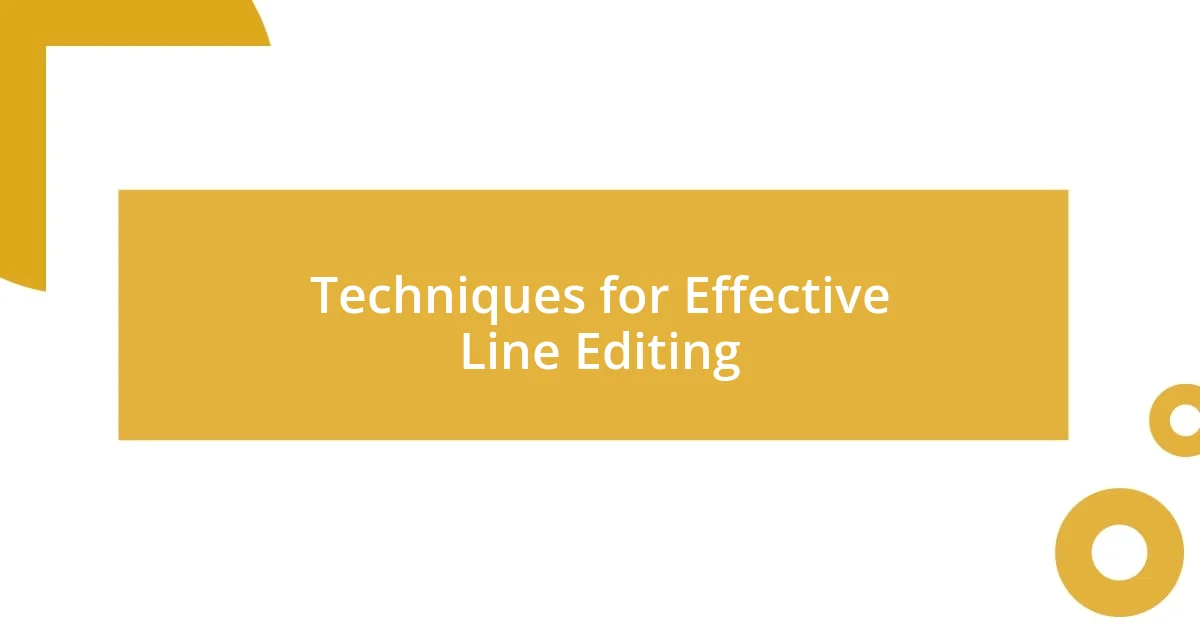
Techniques for Effective Line Editing
When it comes to effective line editing, one technique that has really transformed my approach is reading my manuscript out loud. I remember the first time I did this; I caught awkward phrasing and stilted dialogue that my eyes simply skimmed over. There’s something about hearing the words that helps me identify sections that don’t flow well. Have you ever noticed how different your writing sounds aloud versus on the page? It’s a powerful tool to ensure that your story feels natural and engaging.
Another strategy I often employ is focusing on one element at a time during my edits—whether it’s dialogue, descriptions, or pacing. Initially, I used to jump from one aspect to another, and it made my editing feel chaotic. However, honing in on just one element allows me to give it the attention it needs. For instance, during my last edit, I spent an entire session refining dialogue, ensuring that each character’s voice was distinct and authentic. This approach not only enhances the quality of my writing but also makes the process feel more manageable. Have you tried this method?
Lastly, I cannot stress enough the importance of seeking feedback from trusted peers or beta readers. When I shared a particularly raw draft with a close friend, their fresh perspective revealed inconsistencies that I hadn’t noticed at all. It felt vulnerable to open up my work in this way, but the insight they provided was invaluable. Sometimes, the best way to elevate our manuscript is to embrace collaboration. What about you? Have you found that feedback sparks new ideas or highlights aspects you might have missed? Engaging with others can breathe new life into your story and enrich your writing journey.
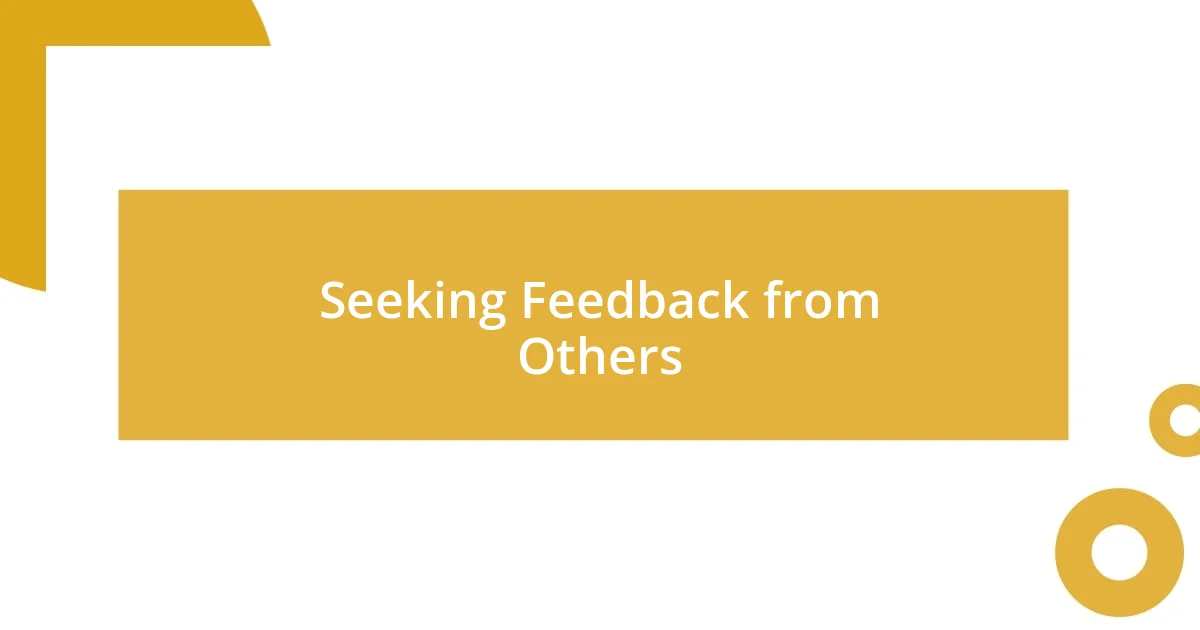
Seeking Feedback from Others
There’s something special about sharing your work with others. I remember when I first handed my manuscript to a fellow writer. My heart raced, filled with a mix of excitement and fear. Their feedback opened my eyes to aspects I had never considered, like pacing and character development. Have you ever been surprised by what someone else can see in your writing? Sometimes, those fresh sets of eyes can offer insights that kickstart new creative directions.
While I value feedback from peers, I’ve found beta readers to be essential in my editing process. After my last draft, I enlisted a diverse group—each with different tastes and perspectives. One reader noticed that the emotional arc felt flat in a specific chapter, prompting me to revisit that section. This made me realize just how critical it is to play to the strengths of my audience’s feedback. Have you tapped into the power of beta readers? Their contribution can truly enrich your story and tighten your narrative.
Engaging in discussions about my manuscript adds layers of understanding I might overlook on my own. For instance, attending a writers’ group session changed how I defined my characters’ motivations. Hearing others’ interpretations sparked ideas I hadn’t considered before. Isn’t it fascinating how dialogue can shape an author’s perspective? Encouraging dialogue around your work not only fosters camaraderie but can also lead to breakthroughs you didn’t think possible.
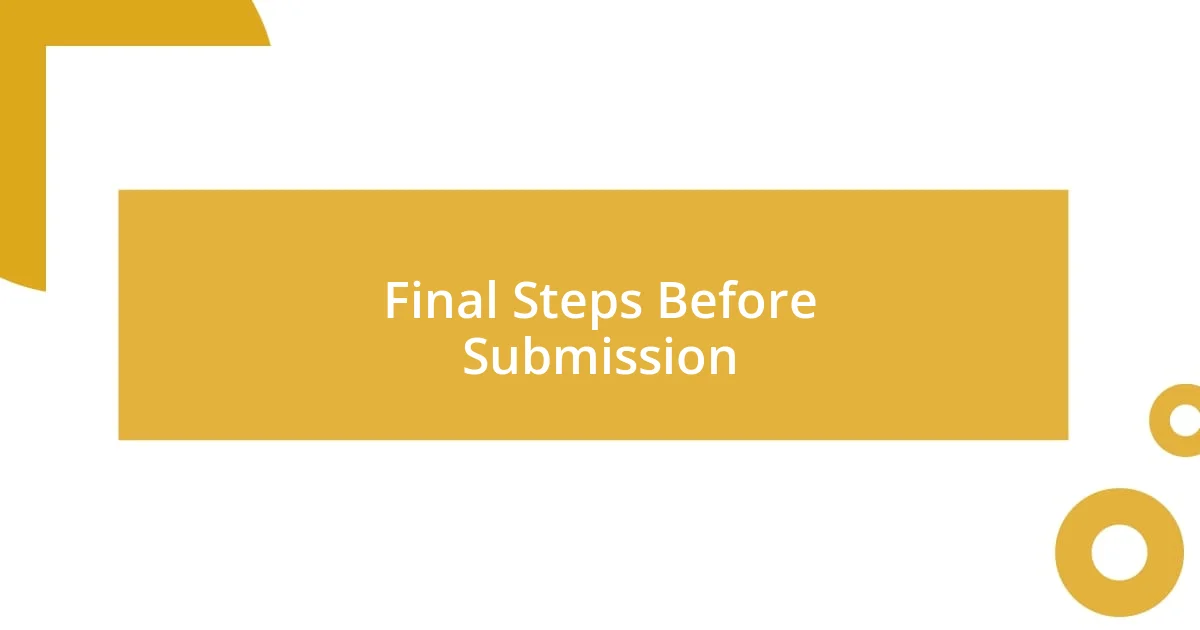
Final Steps Before Submission
When I reach the final steps before submission, I make a deliberate effort to give my manuscript a thorough final read, focusing on typos and formatting inconsistencies. The last time I did this, I was stunned by the small errors that slipped through the cracks. It’s as if my brain fills in the blanks while I read, but taking my time during this phase reveals important details. Have you ever noticed how those little mistakes can tarnish an otherwise polished piece?
After ensuring the text is clean, I like to revisit my submission guidelines meticulously. Each publisher has specific requirements, and I can’t stress enough how crucial it is to follow them. I learned this the hard way when I missed a word limit on my first submission and felt that sinking feeling in my stomach. Double-checking submission formats can save you from unnecessary heartache. Have you ever found yourself accidentally disregarding a simple guideline?
Finally, I take a moment to reflect on my manuscript as a whole and how it aligns with my initial vision. This process is often emotional for me; it feels like saying goodbye to an old friend. I ask myself if it truly conveys the message I intend to share. With my last project, this reflection prompted me to add a few poignant lines that deepened the emotional impact of the story. How do you ensure your manuscript resonates with your core message just before sending it off into the world?


